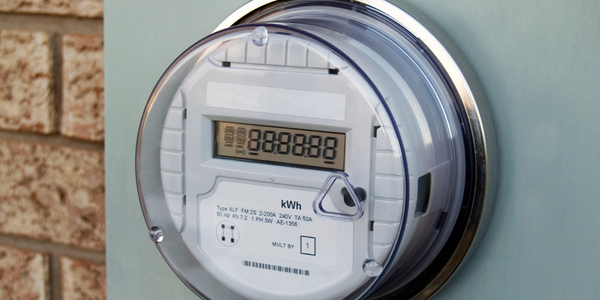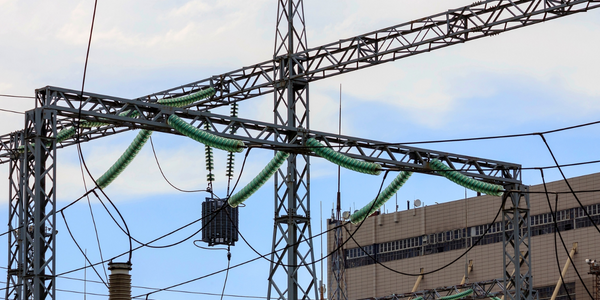Technology Category
- Infrastructure as a Service (IaaS) - Cloud Middleware & Microservices
- Sensors - Electrical Conductivity Sensors
Applicable Industries
- Electrical Grids
- Life Sciences
Applicable Functions
- Product Research & Development
Use Cases
- Structural Health Monitoring
Services
- System Integration
About The Customer
Connecticut Reserve Technologies, LLC (CRT) is an engineering consulting firm based in the United States. They specialize in the development of distributed electrical power systems, with a particular focus on microturbines for compact cogeneration units. These units are designed to provide on-site power for manufacturing plants and other facilities, offering an economical and reliable alternative to public utility lines. CRT's work often involves the use of advanced structural ceramics, such as silicon nitride, which allow microturbines to operate at higher temperatures than conventional metal alloys. This leads to significant fuel savings and emissions reductions. CRT's work is often conducted under the U.S. Department of Energy's Distributed Energy Program.
The Challenge
Connecticut Reserve Technologies (CRT) faced a significant challenge in the development of microturbines for compact cogeneration units. These units, designed to provide economical and reliable power for manufacturing plants and other facilities, relied on advanced structural ceramics like silicon nitride. While these ceramics allowed the microturbines to operate at higher temperatures than conventional metal alloys, leading to significant fuel savings and emissions reductions, they also exhibited large variations in fracture strength. This was particularly true when considering the inherent flaws resulting from various surface treatments. The challenge was to account for these complex statistical strength distributions to make more accurate predictions of expected component life. Another challenge was defining and implementing a method that establishes Weibull distribution metrics for silicon nitride suppliers based on the particular component. This required combining service stress states from the various treated surfaces of a rotor blade with a stipulated component reliability to develop material performance curves.
The Solution
CRT utilized ANSYS Structural analysis software to address these challenges. Through the use of ANSYS Parametric Design Language (APDL), surfaces of a rotor component with specified finishes were identified, the ANSYS results file was queried, and stresses were mapped to the relevant element surfaces. Failure data was then analyzed using the CRT WeibPar algorithm. Using information generated by ANSYS (geometry and stress state), the CARES algorithm computed component reliability. The openness of ANSYS technology and the ease of integration with other software enabled the ANSYS, CARES, and WeibPar programs to operate together in a smooth and efficient manner. This solution allowed for the development of material performance curves that could be scaled to standard ceramic bend bar test specimens, making component requirements more readily understood by material suppliers.
Operational Impact

Case Study missing?
Start adding your own!
Register with your work email and create a new case study profile for your business.
Related Case Studies.

Case Study
Hydro One Leads the Way In Smart Meter Development
In 2010, Ontario’s energy board mandated that time-of-use (TOU) pricing for consumers be available for all consumers on a regulated price plan. To meet this requirement, Hydro One needed to quickly deploy a smart meter and intelligent communications network solution to meet the provincial government’s requirement at a low cost. The network needed to cover Hydro One’s expansive service territory, which has a land mass twice the size of Texas, and its customers live in a mix of urban, rural, and remote areas, some places only accessible by air, rail, boat or snowmobile. Most importantly, the network needed to enable future enterprise-wide business efficiencies, modernization of distribution infrastructure and enhanced customer service. To meet these needs, Hydro One conceptualized an end-to-end solution leveraging open standards and Internet Protocols (IP) at all communication levels. The utility drew upon industry leaders like Trilliant to realize this vision.

Case Study
Selling more with Whirlpool
Whirlpool wanted to add connectivity to appliances and transform the company's relationship with customers. Traditionally, Whirlpool interaction with customers was limited to purchases made once every ten years. Connected washer and dryers provide exciting new features like remote management of start times and inter-machine communication.

Case Study
SAS® Analytics for IoT: Smart Grid
Companies face falling revenues, rising infrastructure costs, and increasing risk of outages caused by inconsistent energy production from renewable sources. Less money is coming in as more people and organizations take steps to curb their energy use. Utilities are paying more to maintain and build infrastructure due to increasing complexity, resulting from the rising number of intermittent and variable renewable energy sources connected in the distribution grid.

Case Study
Enel Secures Italian Power Generation Network
Electric energy operators around the world are working to increase the reliability and cyber resiliency of their systems. This includes Enel, a global power company that manages and monitors the Italian power grid. This grid:• Serves 31 million customers• Has a net installed energy capacity exceeding 31 gigawatts• Includes more than 500 power generation plants,including hydroelectric, thermoelectric, and wind• Is managed and monitored by Enel 24/7/365• Is operated by Terna, the Italian Transmission System Operator (TSO)Enel is responsible for the availability of the grid’s underlying ICS and industrial network. It also manages Regional Control Centers and Interconnection Centers which connect with the TSO. The TSO manages the flow of energy to the grid plus controls and remotely regulates the power generation of power plants, increasing and decreasing power production as required. The complex system of interaction and cooperation between Enel and the TSO has strong security implications as well as operational and business challenges.

Case Study
IoT based Energy Quality Availability Monitoring Solution
There were several challenges faced:Since this data would be in the public domain, accuracy and authenticity of this data were of paramount importance. It should be able to withstand scrutiny.It is challenging to build an appliance that can withstand a wide range of voltage fluctuations from as low at 90v to as high as 320v. Since the device would be installed in remote locations, its resilience was of paramount importance.The device would have to deal with poor network coverage and have the ability to store and re-transmit data if networks were not available, which is often the case in rural India. The device could store up to 30 days of data.The platform that deals with the data should be readily available and highly reliable and never lose a packet of data.

Case Study
Hydro Utility Builds Foundation for Powerful Efficiencies and Protection
As the main British Columbia electric distributor, BC Hydro provides 1.9 million residential, commercial, and industrial customers with energy. The hydro utility transformed to a digital business with Cisco connected networking, security, and smart grid solutions. • Deliver reliable, high-quality services • Enable remote automation and monitoring • Connect applications over a common networking infrastructure







